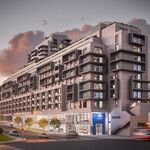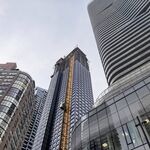St. Clair was supposed to be a model for the future LRT lines, and it doesn't resemble any European system I've ever ridden.
Well in Europe they would yank out half the stops and make people walk further. If the stops are spaced the same as bus routes it shouldn't be surprising that the vehicle doesn't move much faster than a bus route. It isn't a failure of the technology... it is a failure of the implementation. On Bloor the subway stops at Yonge, Bay, Queens Park (Museum isn't really on the Bloor line but it provides service to the area nevertheless), St.George, Spadina, and Bathurst. On St.Clair you have St.Clair station, Yonge St (after just leaving the station), Deer Park, Avenue Rd, maybe a stop east of Warren, Russel Hill, Spadina Rd, maybe a stop before entering St.Clair West, a time wasting loop to get to a stop at St.Clair West station, and a stop at Bathurst. So 8-10 stations compared to 5-6. I really doesn't matter if it is a subway or not... if the Bloor line had to make about double the stops to get from Yonge to Bathurst and take a circuit route to connect with the University line then of course it would be slow as well. With that many stops timing of stop light signals is almost irrelevant. The problem of course is that nobody wants their stop to disappear so rather than tell people they are out of luck and they will have to walk like people on Bloor and the Danforth to get to the stop, they turn LRT into a bus route. LRT stops should be spaced no closer together than 1/3 km. If there are too many whiners complaining about loosing their stop then add a bus service like the 97B which shows up every 30 minutes to service those intermediate stops.
If they were serious about implementing LRT/tram ROWs as a service upgrade there would be a stop at St.Clair Station (in the station), Avenue Rd, Russell Hill, St.Clair West Station (on a new platform under St.Clair so the LRT/tram can continue going straight since it is a through service), and at Bathurst.
On Spadina they could yank out the stops at Sussex, Wilcox, Nassau, Sullivan, and Richmond. Throw on a bus that shows up every half hour to which stops at those stops and voila, something much closer to the service on Yonge. Timed lights at Nassau, Sullivan, Adelaide, and Richmond would actually mean something because the streetcar wouldn't need to stop immediately before or after the light anyways.




